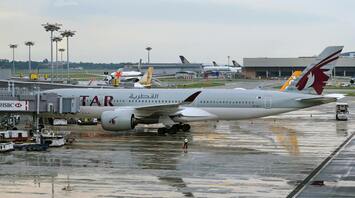Changes in Middle Eastern Airlines' Routes: Impact on Travel

The events of October 1st have significantly affected air travel in the Middle East. Numerous flights had to be diverted, including 81 flights operated by airlines such as Qatar Airways and Emirates. As a result of these route changes, travel times increased, leading to higher fuel costs, which added substantial expenses for the carriers.
Increased Costs and Their Impact on Airlines
Constant route adjustments not only lead to flight delays and cancellations but also result in additional expenses for the airlines. Redirecting flights to longer routes forces them to spend more fuel and time in the air. In a situation where airlines rely on high profitability from these routes, extra fuel costs and longer flight times can have a significant impact on their overall profitability.
Middle Eastern airlines, including Emirates and Qatar Airways, traditionally use the airspace of countries like Iraq and Iran for flights to many destinations. However, the complicated situation in the region has led some airlines, such as Flydubai, to temporarily halt flights to cities like Tel Aviv. This creates additional challenges for operators, as flights to these regions are usually highly profitable.
Impact on Passengers
For travelers, these changes mean not only potential delays but also longer travel times, which can cause inconvenience and additional expenses. Passengers heading to popular tourist destinations, such as Lebanon, will also face restrictions as most flights to the country have been canceled, with the exception of certain Emirates routes.
In the end, despite the difficulties and increased costs, airlines in the region continue to adapt to the changing conditions. However, prolonged disruptions could significantly affect their financial stability and reputation among travelers, especially those accustomed to the comfort and reliability of these carriers.



















